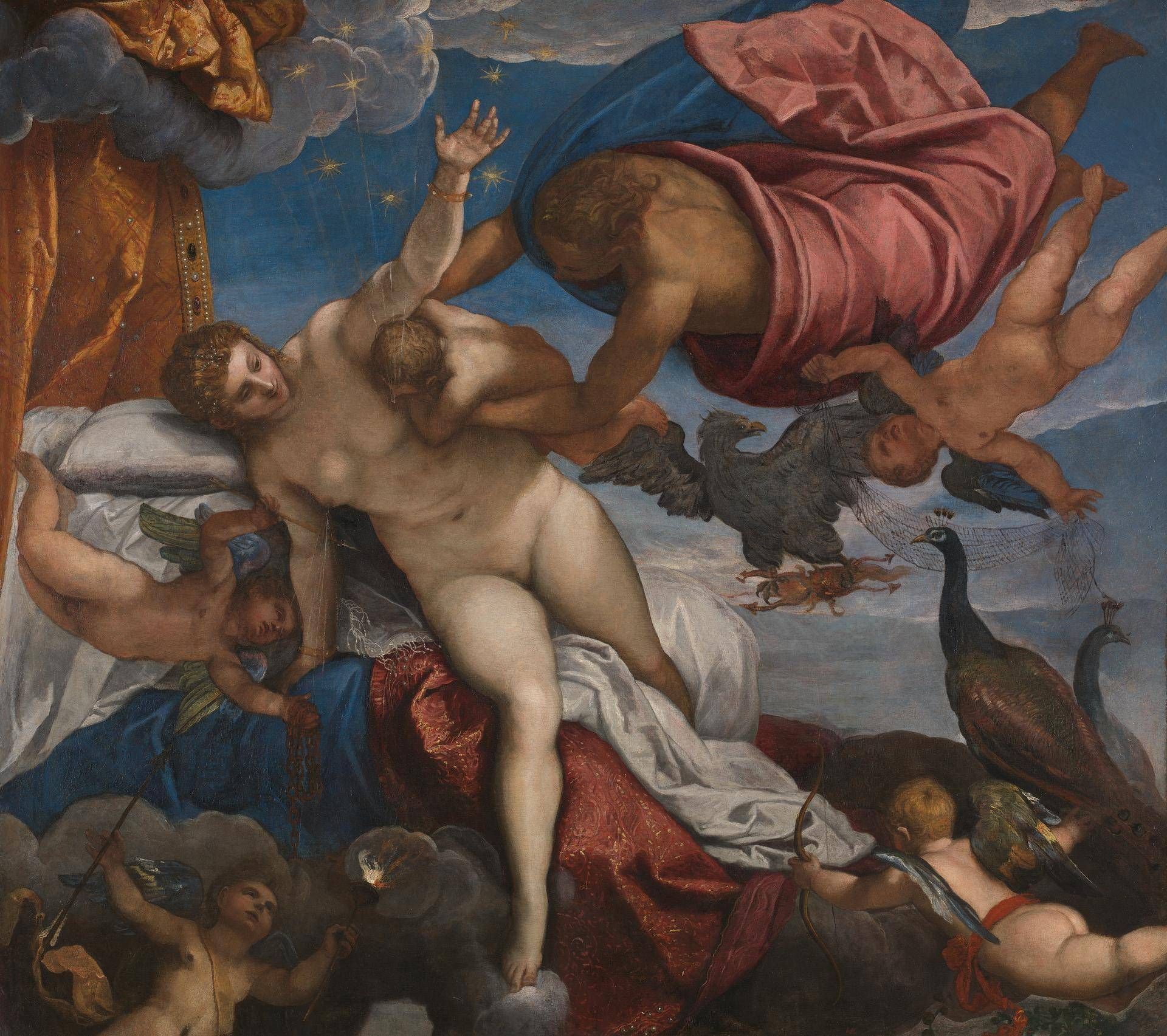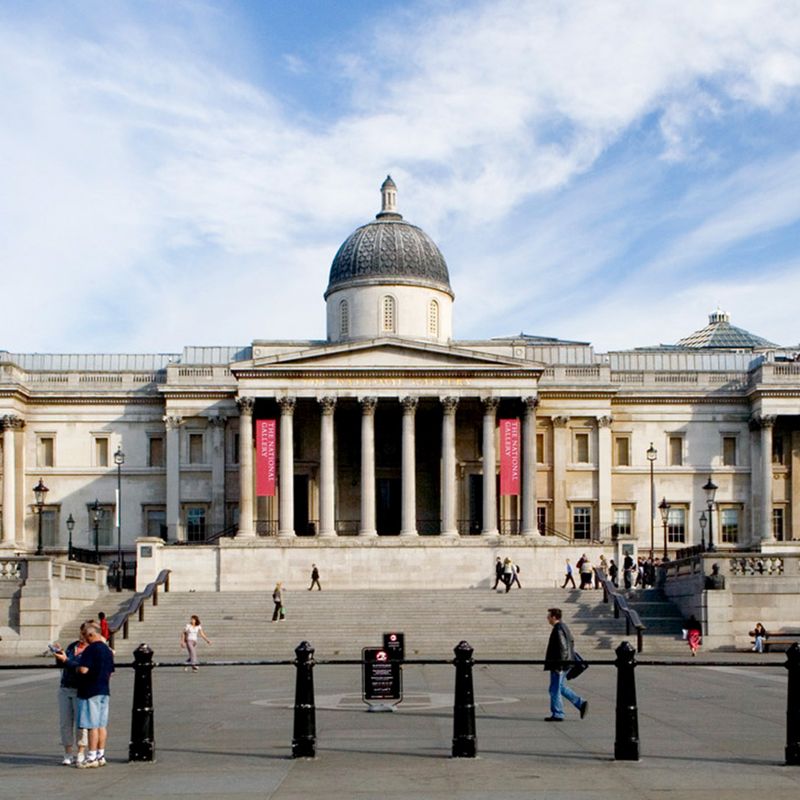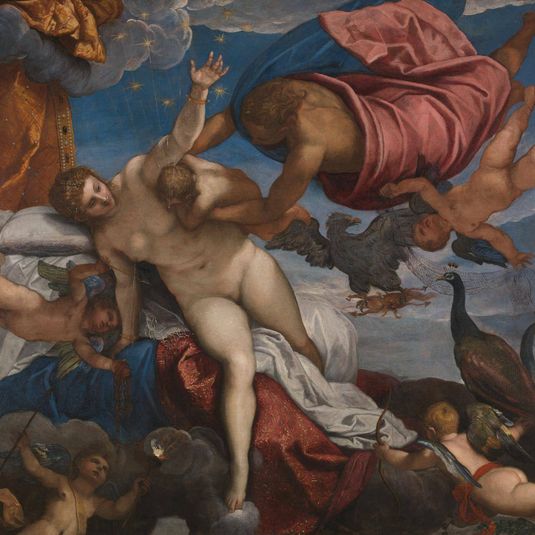
The Origin of the Milky Way
The painting has been known as The Origin of the Milky Way since about 1857 but 'The Nursing of Hercules', as it was known in the eighteenth century, would be a more accurate title. The picture is an allegory as well as a mythological narrative. What we see now is only part of the original painting: about a third of Tintoretto's original canvas was cut off the bottom at some time before 1727.
Jupiter attempted to attain immortality for his son Hercules, whose mother was the mortal Alcmene, by placing him on the breast of his sleeping wife, the goddess Juno, to drink her milk. She awoke and the milk that spurted from her breast formed the Milky Way - the haze of which as seen in the bright night sky seems to be suggested by the flowing cloud cover at centre right, behind the eagle. This is the episode depicted in the painting we see today. Juno is accompanied by her attribute of peacocks, while Jupiter is accompanied by an eagle clutching a lightning bolt.
A reduced copy of the original painting, probably made in the seventeenth century (private collection, Germany), provides evidence about the missing lower part of the composition. In the lower part of the copy a nude woman reclines on a bank with a large body of water behind her. Roots grow from the ends of the fingers of her right hand, which dangles on the bank; shoots grow from the fingers of her left hand, which she extends upwards. There are large white flowers growing in the right hand corner.
Tintoretto probably knew the version of the myth of the Nursing of Hercules written in the Geoponica, a Byzantine textbook on botany - then believed to have been written by the Emperor Constantine - which was translated into Italian and printed in Venice in 1542 and 1549. In that version of the story, the milk from one of Juno's breasts is said to have fallen down to earth and created the milk-white flowers of the lily. The woman reclining in the now-missing part of the painting is probably Ops, the embodiment of Earth and mother of Juno and Jupiter.
The subject is very rare in art but features on the back of a medal commemorating Tommaso Rangone of about 1560 (one of which is in the British Museum, London). Rangone was closely associated with Tintoretto and commissioned the famous series of paintings from him of the Miracles of Saint Mark for the Scuola Grande di San Marco in Venice. It is likely that The Origin of the Milky Way is also connected to Rangone in some way and may have been commissioned by him. Rangone was a physician and astrologer; in Alessandro Vittoria's memorial to him on the facade of the church of S. Giuliano in Venice he is shown holding flowers and between earthly and celestial spheres. The Origin of the Milky Way may reflect some of Rangone's interests, as stars and flowers were both important to his learning. Tintoretto's painting may function as an allegory of the physician's art as practised by Rangone, with special reference to his particular interest in promoting longevity (in the painting Jupiter is attempting to make Hercules immortal), which was central to Rangone's whole career.
Credit: Bought, 1890
c. 1575
Oil on canvas
149.4 x 168.0 cm
NG1313
Image and text © The National Gallery, London, 2025
Where you'll find this

National Gallery
Permanent collection
Discover more

Creation myths in 'The Origin of the Milky Way'
•
5:11





